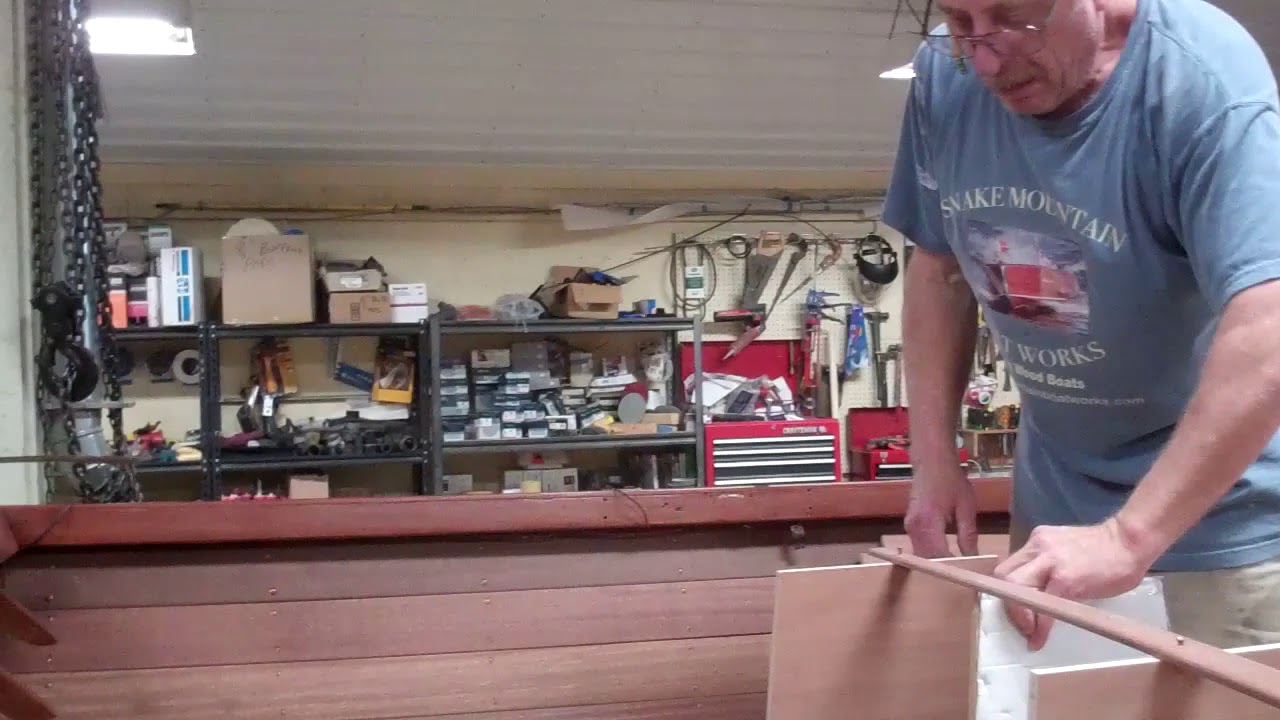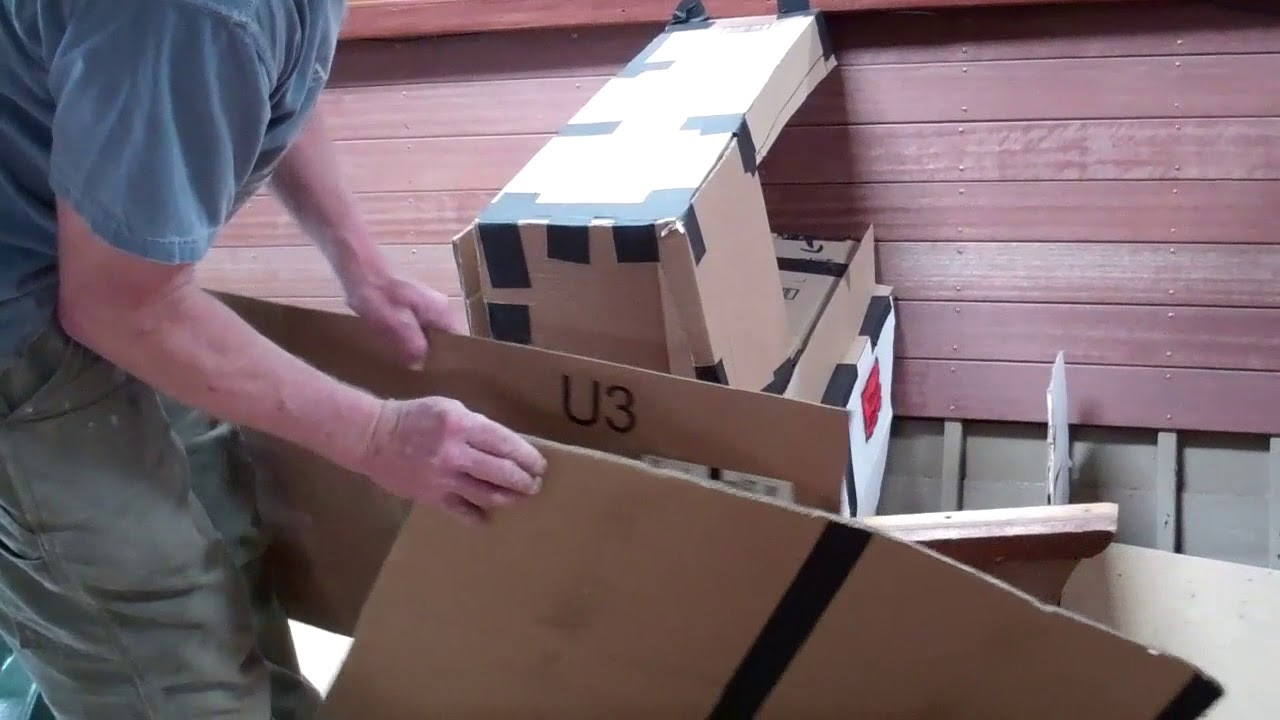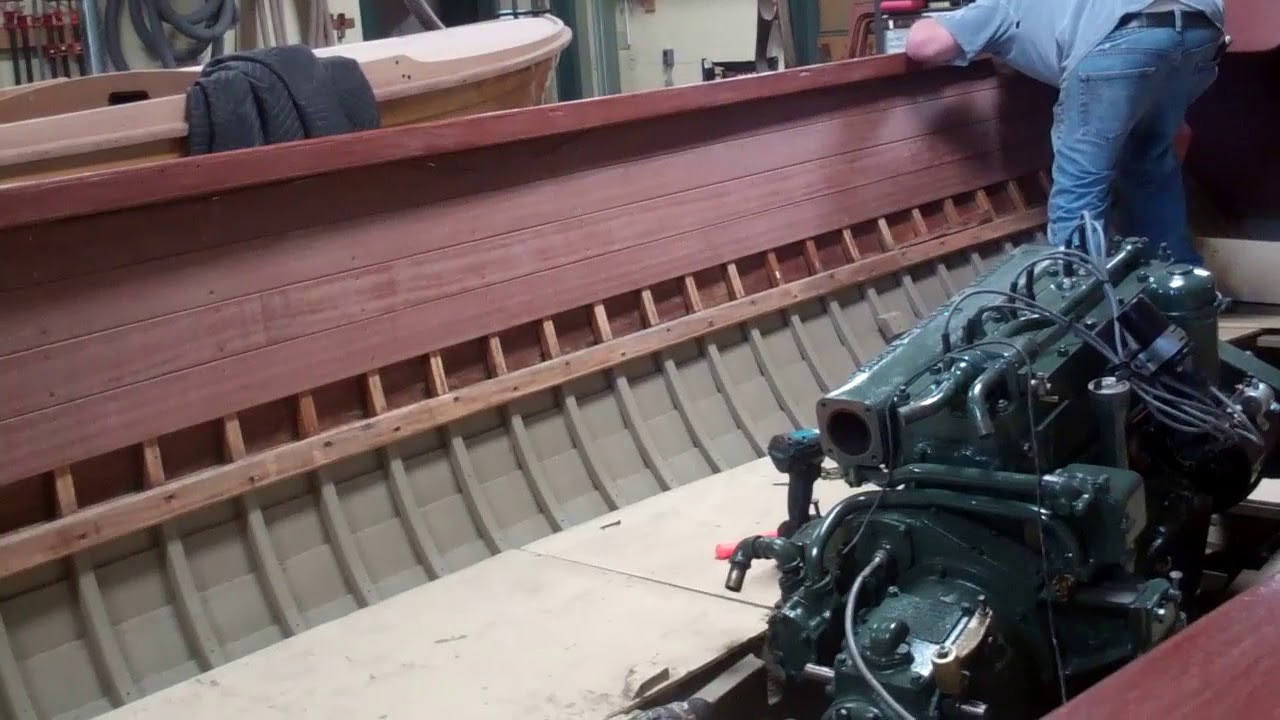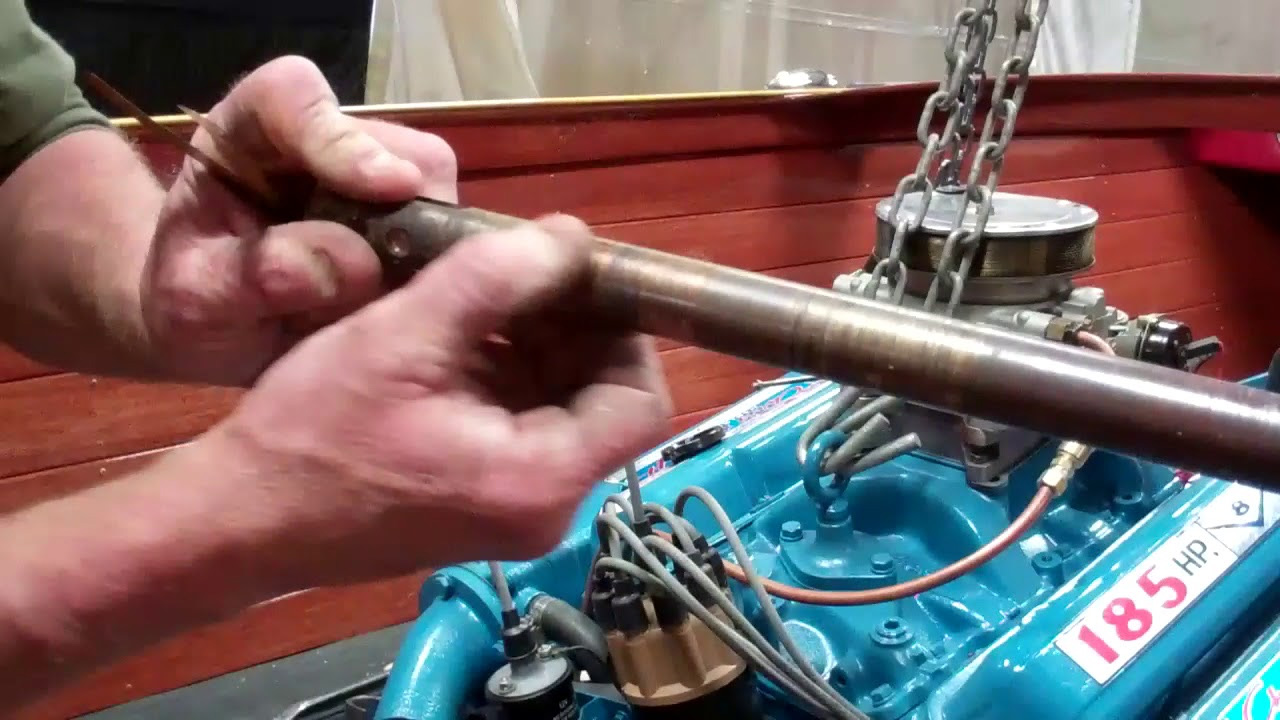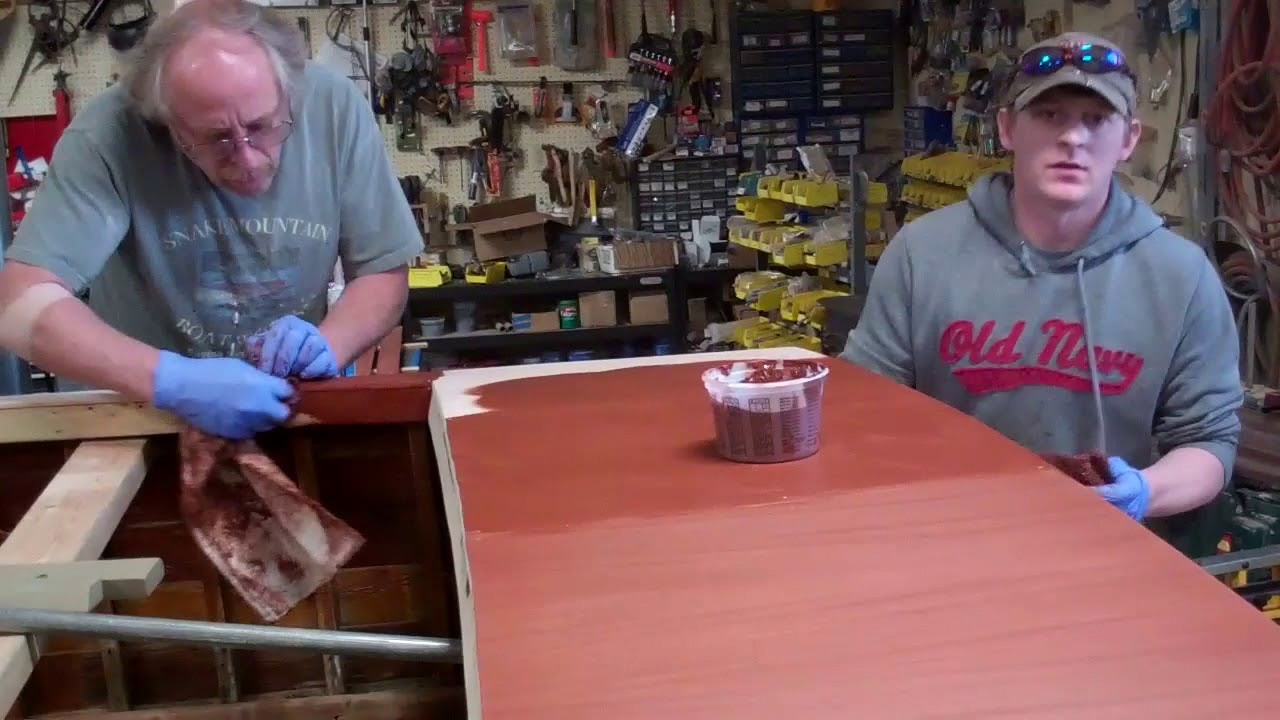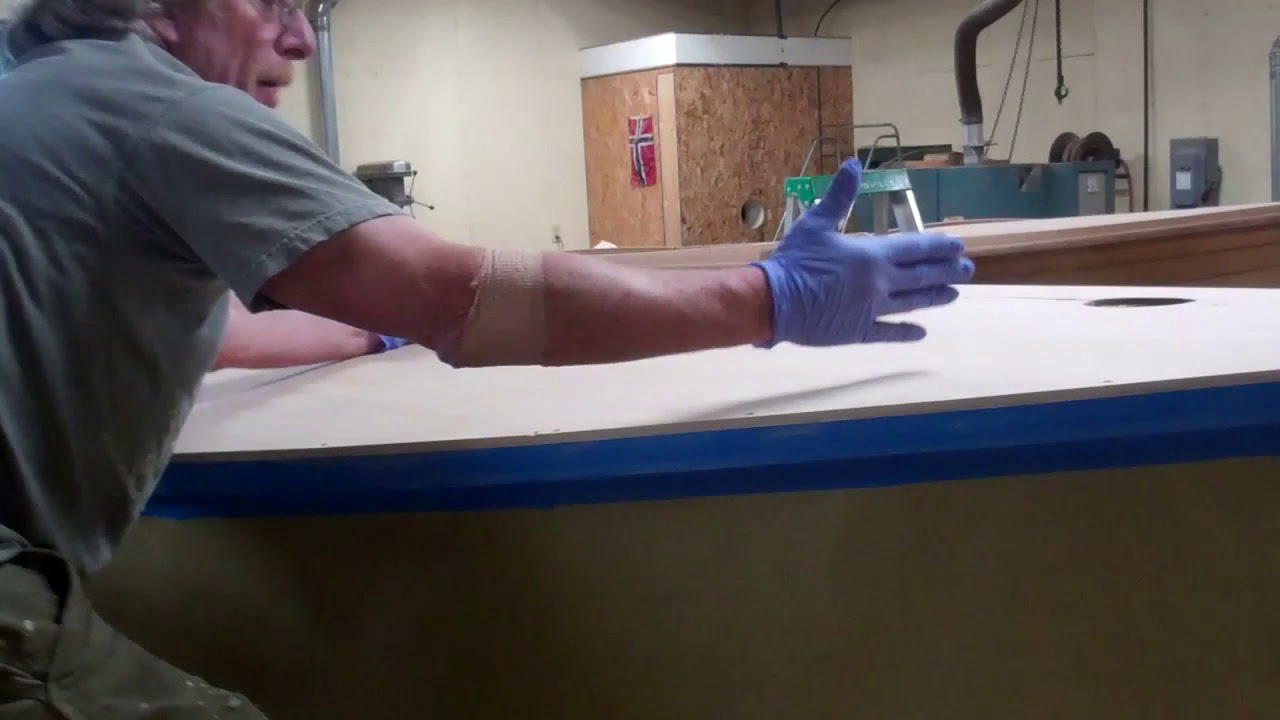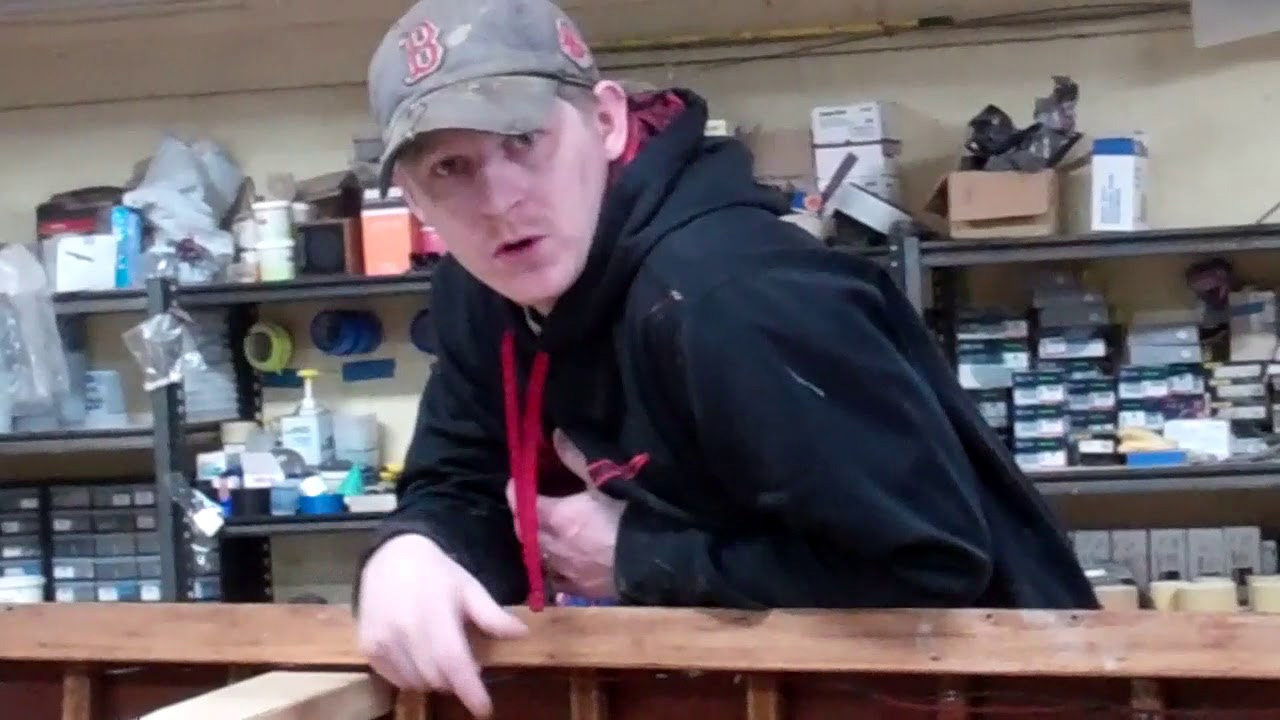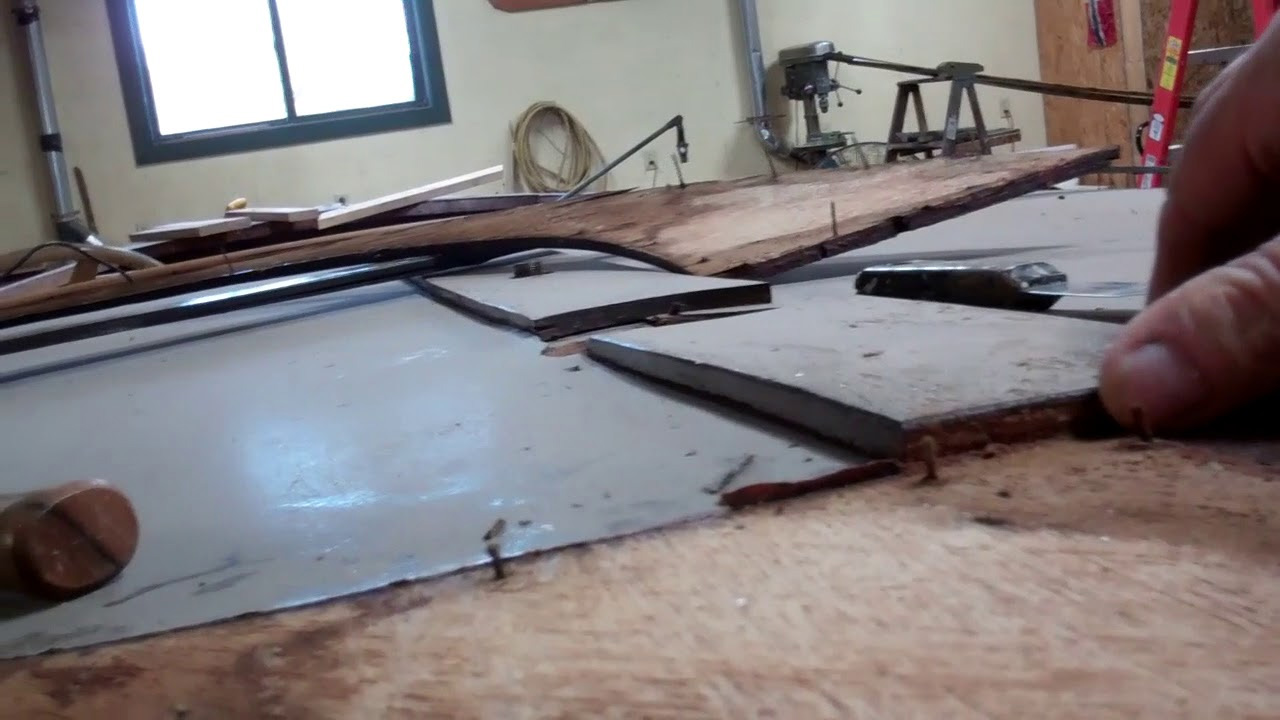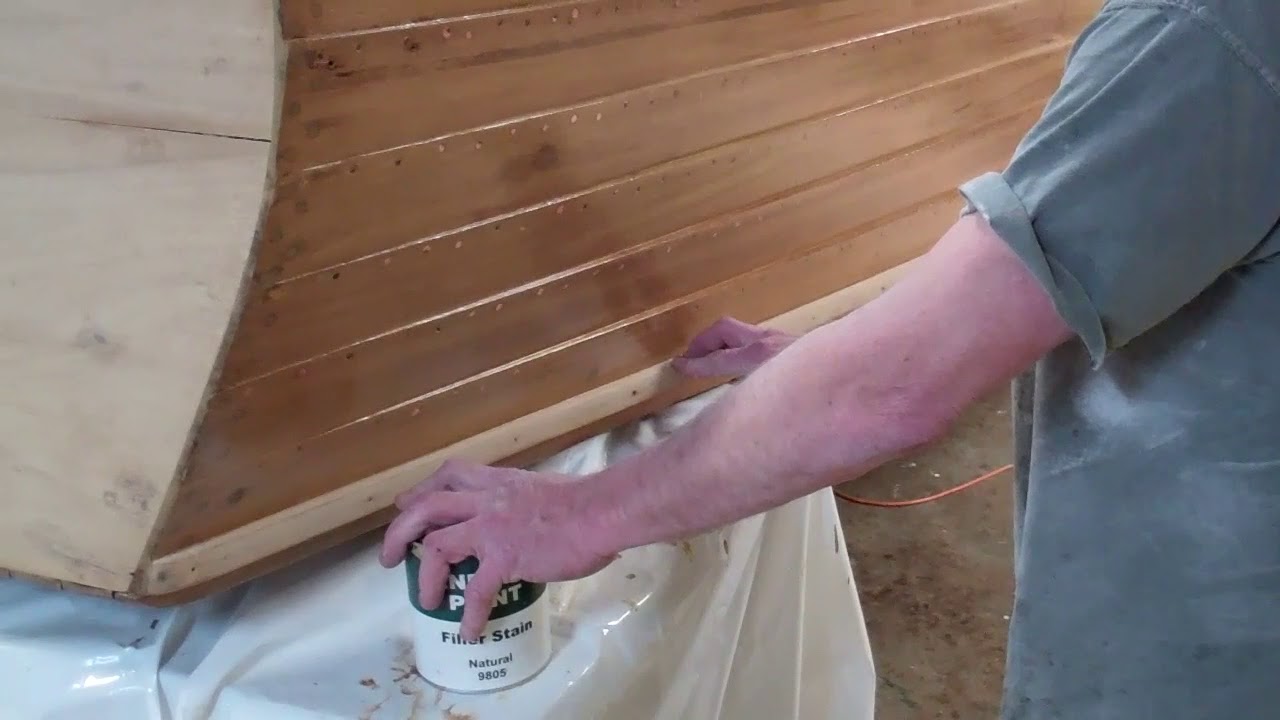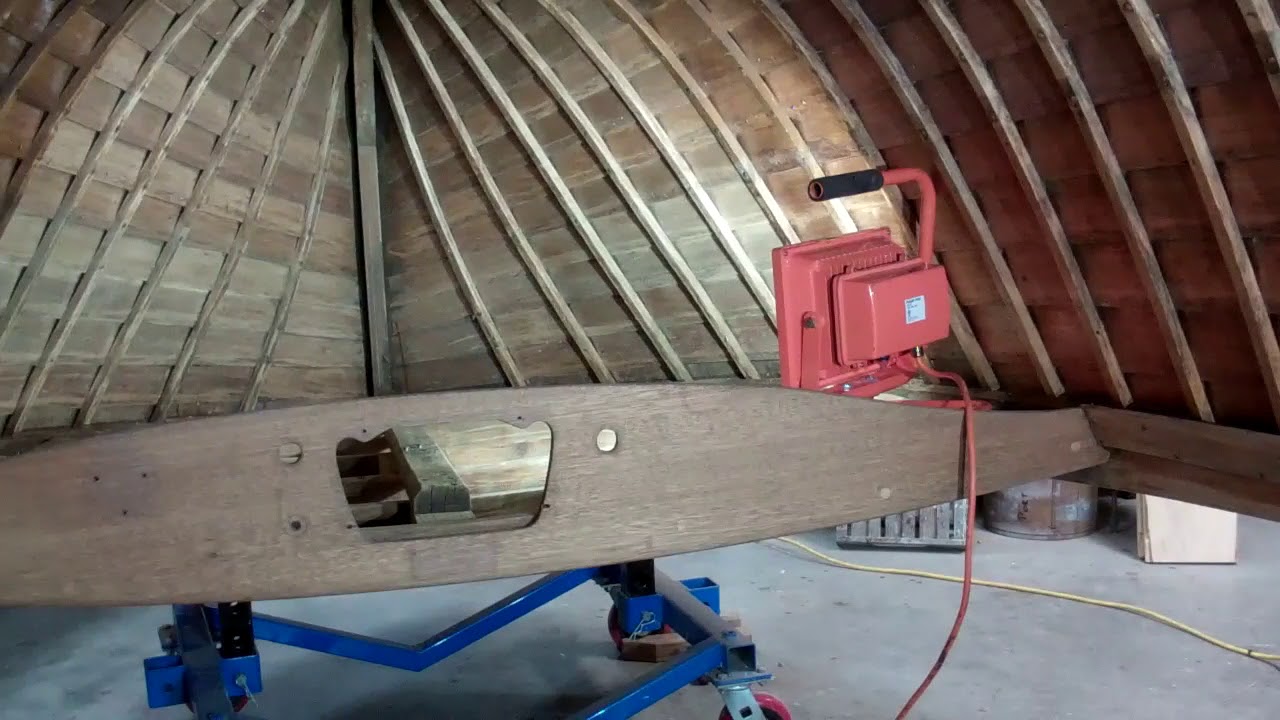Under John’s eye and steady hands, sheets of half-inch ribbon-cut marine plywood are slowly being transformed into what will be a commodious helm station, complete with a flat floor from the forward end of the engine to the firewall.
That John is in his element, muttering measurements and angles to himself is evident. That he needs his space and wants to be left alone is even more evident. “Helpful” kibitzing is verboten. Prior to launch this slow, exacting process, John and RJ finished fabricating and installing the balance of her new ceilings. With the ceilings in place, John knows precisely the arcs and spaces before him.
It will likely take him the better part of a week to complete the new seating configuring, at which time we must release all of it, including all of the ceilings so they can be finish sanded, bleached, stained and sealed with three coats of Clear Penetrating Epoxy Sealer (CPES). (The lockers will likely be assembled ahead of time so that we can attend to plugging countersinks ahead of bleaching, staining and sealing.
We will apply fifteen coats of Pettit Hi-Build varnish before installing everything for good. We received the final batch of hardware and hinges back from D & S Custom Metal Restoration yesterday.
Shauna Lawrence, Kocian Instruments, expects to ship the preserved gauge cluster in a few weeks. Weather is our major frustration at present. We sourced some beautiful, air-dried Honduran mahogany, which will be transported on an open flatbed trailer. Given the good things that multiple years of air drying has done for the lumber, transporting it through the driving monsoon-like rains we are now suffering is not OK and will not happen.
Looks like a dry window is opening the first half of tomorrow. Guess who will be on the road well before the first glimmer of sunrise emerges over the Green Mountains?

